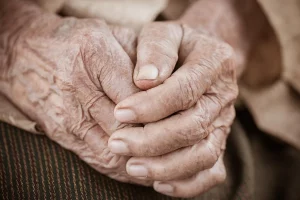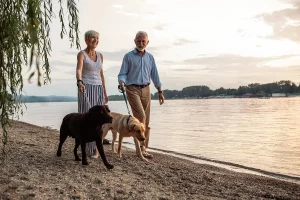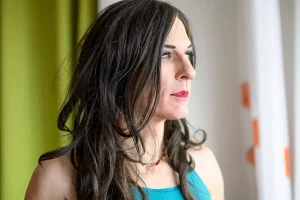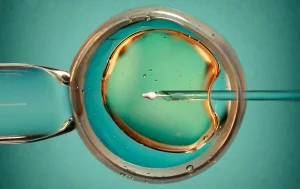 SOMETIMES you have to take matters into your own hands.
SOMETIMES you have to take matters into your own hands.
We could have a breast cancer vaccine by 2020, if the National Breast Cancer Coalition’s Artemis Project makes good on its goals. The advocacy group went directly to research scientists to ask that they work together for funds to be channeled towards prevention as much as cure.
Their focus is two-fold — the development of a vaccine plus prevention of the spreading of cancer in those with the disease. Impatient with the current process of research into the second-leading cause of death amongst women, the organization has said “hope is not enough” and that they need a “commitment” from scientists to end breast cancer as soon as possible.
Former Good Morning America presenter Joan Lunden appeared on the cover of ‘People’ magazine last week after shaving her head in preparation for treatment for breast cancer. This kind of normalization of cancer has its positives and negatives. Increased awareness and support through coverage such as this and TV shows like The Big C and FOX’s newest dramedy Teh Red Band Society is, of course, helpful. However, what does it mean that we have come to accept the disease as an unavoidable part of our lives?
The World Health Organization reported that by 2020 (by which time the vaccine is supposed to have been created), we will see a 50% increase in cases of cancer, in large part due to a surge in unhealthy lifestyles globally.
The Artemis Project’s plan is likely inspired by the proliferation of Gardasil, the vaccine against HPV, a virus known to cause cervical cancer. In the case of this vaccine, the receiver is inoculated against certain strains that can progress to cancerous states. It is rarely mentioned that a healthy young woman’s body will often eradicate HPV already present, naturally. A weakened immune system caused by poor lifestyle choices, stress, serious illness, and the impact of some drugs — including steroids like hormonal contraception — will increase the possibility that a woman’s body will be unable to combat HPV and stop it from developing into cervical cancer cells.
Cervical cancer is preventable through certain choices (like using condoms or eating more carrots – seriously!), but clearly it is considered easier to blanket-vaccine young teens. There is some critical discussion of Gardasil, its usefulness and side effects, but this tends to be dismissed by those who see such discussion as a by-product of the spurious anti-vaxxer movement.
In her interview with People magazine, Joan Lunden said, “I’m almost reluctant to say it because it sounds superficial. But when you lose your hair, it just affects the way that you look at yourself in the mirror. You feel less feminine, pretty or desirable, and it’s not an easy thing to go through.” Lunden’s comments about her hair echo the comments made by Angelina Jolie about her breasts after her double mastectomy and breast reconstruction, a decision prompted by her inheritance of a gene mutation that significantly increases risk of development of the disease.
Only 10% of breast cancer cases are linked to this genetic mutation, but almost one third (3x more) are linked to lifestyle factors like weight gain, lack of exercise, too much red meat and processed food, too little fruits and vegetables, and high alcohol consumption. Testing for the mutation has increased considerably since Jolie’s statement, but for 90% of women it won’t be an issue and they’d be better off seeing their doctor for advice on healthy living. Rates of double mastectomies are also rising. Women are choosing to have both, rather than the one affected breast removed, although the risks of this surgery may outweigh the benefits.
A recent study showed double mastectomies do not boost survival rates in cancer sufferers and that those who have only the lump removed (plus radiation therapy) have just as long a life expectancy. The majority of women are over-treated and undergoing unneeded and expensive operations.
When Jolie declared her surgery, my cynical side wondered if it were an easier decision than she might have let on. Non-augmented breasts are becoming less and less common amongst those who can afford the surgery — those we see in movies and magazines — and there is increasing pressure on high-profile women to remain looking youthful. So much so that a current Kickstarter campaign for a book titled Bare Reality showcasing the natural breasts of 100 women — including women who have had one breast removed due to cancer — is being hailed as radically progressive.
A percentage of the proceeds raised by the book will go to Breast Cancer UK — an organization aimed at lowering the number of environmental carcinogens to which we are all routinely exposed through everyday products. People are turning away from companies that are exposed as using carcinogenic chemicals (see the recent Colgate toothpaste finding), but more needs to be done. The US is far behind the rest of the world when it comes to insisting on business practice transparency and regulating corporations on the use of endocrine-disrupting chemicals.
The Artemis Project is correct in its urgency for prevention over cure, but what does it mean when we see the development of a vaccine (which will not be without its drawbacks, we can be certain) within five years as a more plausible and attainable goal than addressing the lifestyle and environmental causes behind such a large number of cancer cases?
















